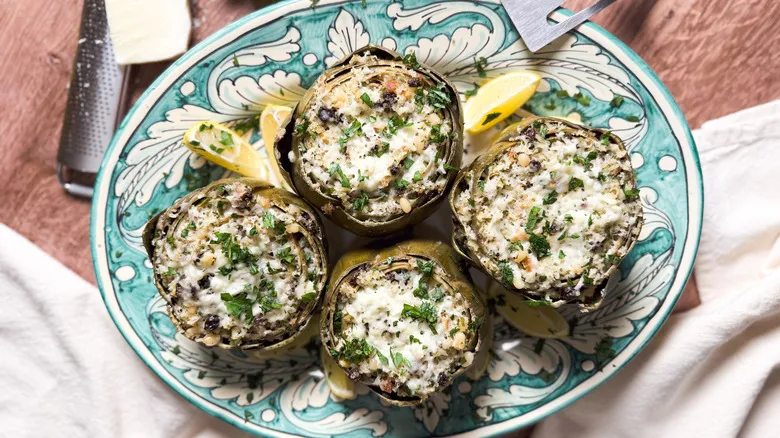Gather the Sicilian-style stuffed artichokes ingredients
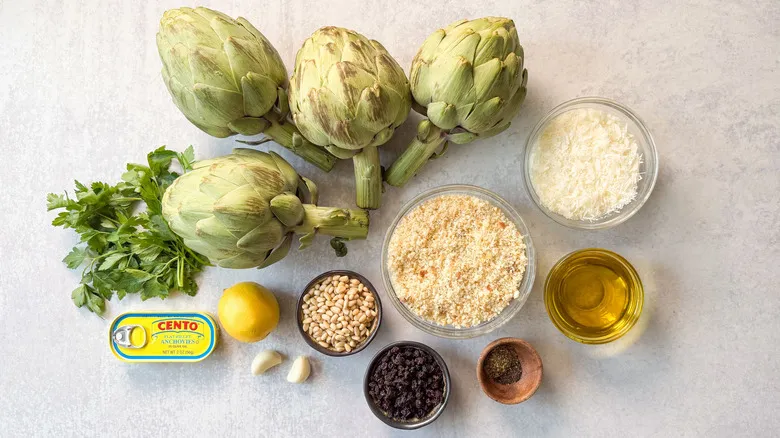
Begin by choosing large, fresh artichokes that are free from imperfections. They should feel substantial, have tightly closed leaves, and display a vibrant green hue, possibly with some purple marbling (you'll also notice the purple inside the artichokes). After trimming and cleaning the artichokes, squeeze lemon juice onto the cut surfaces to prevent browning that occurs when they come into contact with air. The stuffing for the artichokes features traditional Sicilian ingredients: fresh breadcrumbs made from crusty Italian bread, anchovies in olive oil, fresh garlic cloves, pine nuts, dried currants, extra-virgin olive oil, fresh Italian parsley, Pecorino Romano cheese, dried oregano, and black pepper. Some of the cheese and olive oil will be set aside to top the artichokes while they steam.
Step 1: Trim the stems from the artichokes
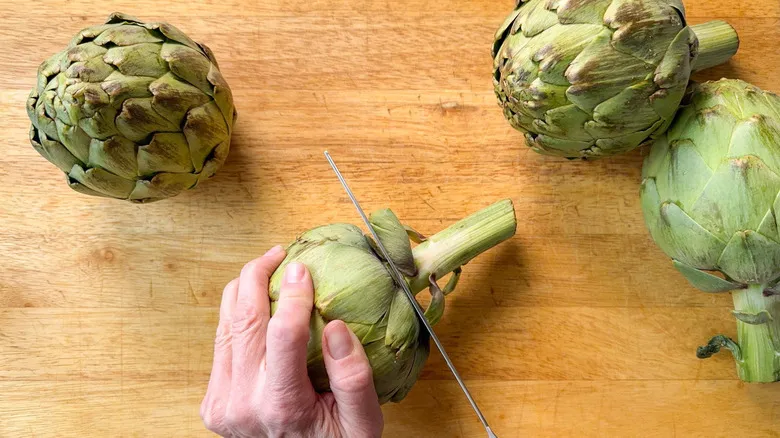
Cut the stems of the artichokes so they can stand upright and stable.
Step 2: Trim the tops of the artichokes
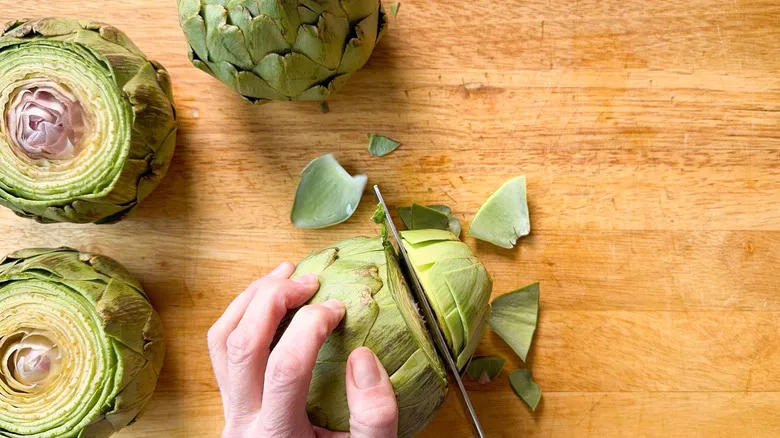
Trim approximately 1 ½ inches from the top of each artichoke.
Step 3: Remove any tough outer leaves
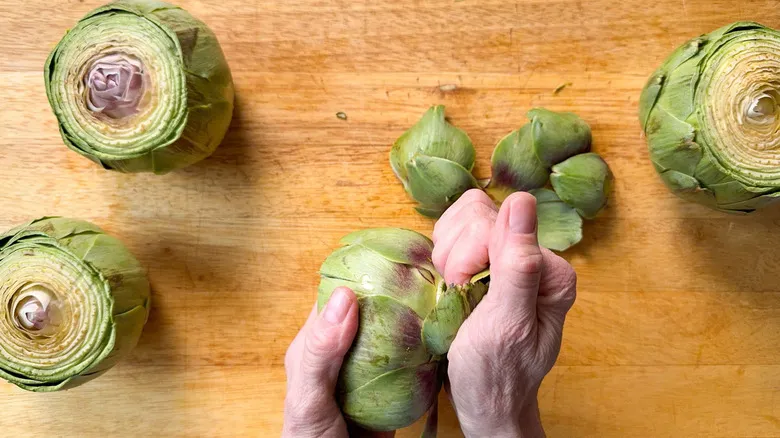
Discard any tough outer leaves and trim any sharp spikes if necessary.
Step 4: Open up the artichoke leaves
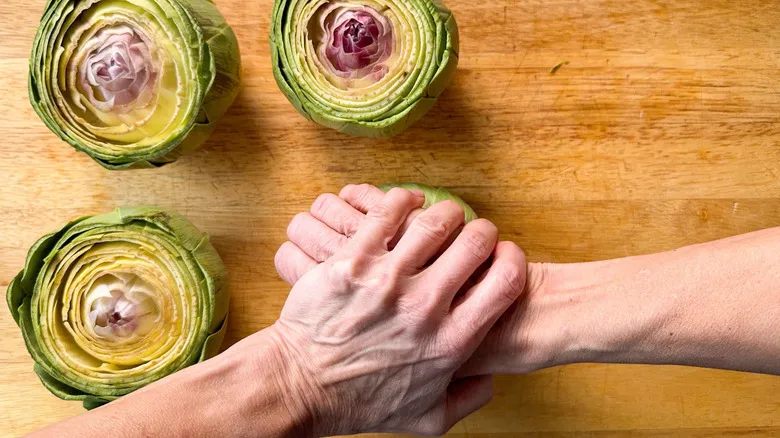
Position each artichoke with the cut side facing down on a cutting board or another surface, and gently press to separate the leaves.
Step 5: Scoop out the chokes
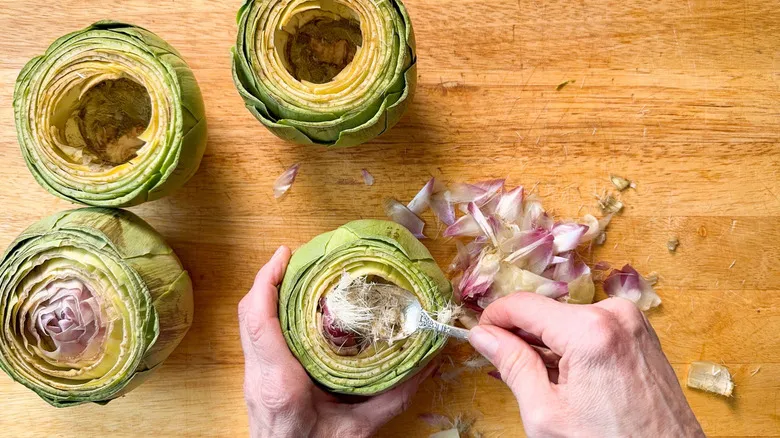
Utilize a spoon or scoop to remove the fuzzy choke from the center of each artichoke and throw it away.
Step 6: Squeeze lemon over the artichokes
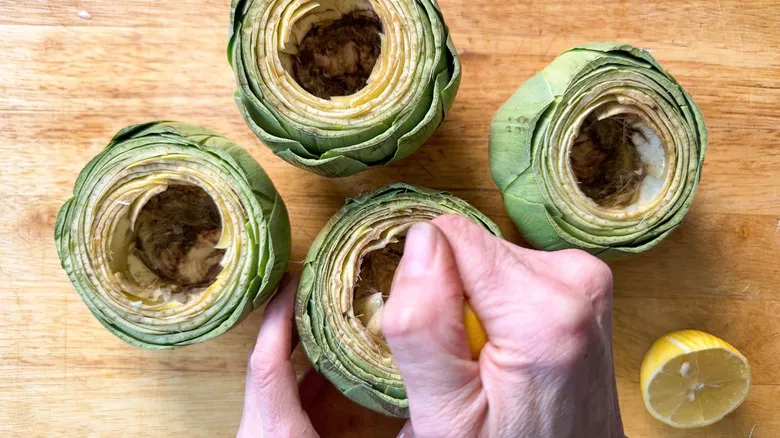
Slice the lemon in half and drizzle the juice over the surface of each artichoke to avoid browning.
Step 7: Mash the anchovies into a paste
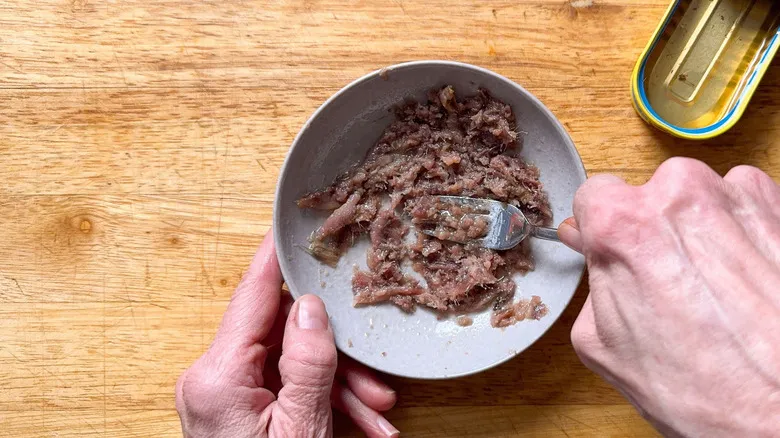
Utilize a fork to extract the anchovies from the oil in the can and crush them into a coarse paste. Set the oil aside.
Step 8: Mix the stuffing
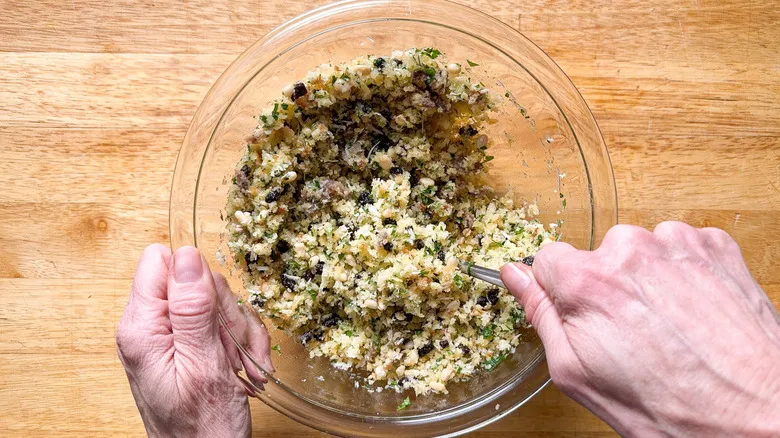
In a spacious bowl, combine the mashed anchovies, breadcrumbs, ¾ cup of cheese, all except 2 tablespoons of olive oil, pine nuts, currants, ¼ cup of parsley, garlic, oregano, pepper, and the set-aside anchovy oil.
Step 9: Fill the artichokes
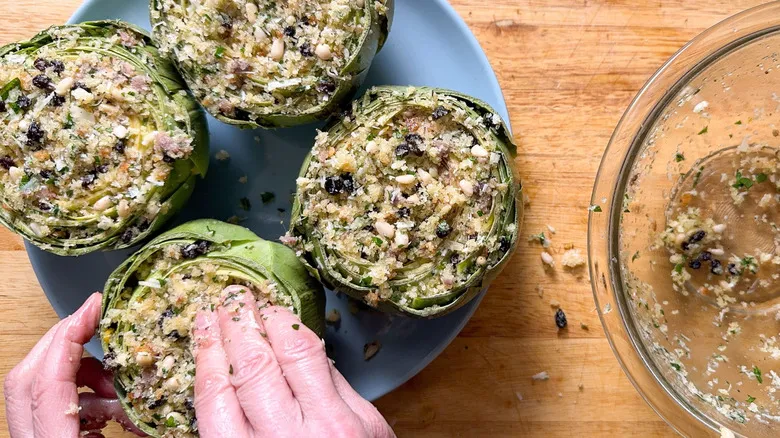
Stuff each artichoke with the filling, gently separating the leaves to pack the mixture into the gaps and centers.
Step 10: Create a steam bath
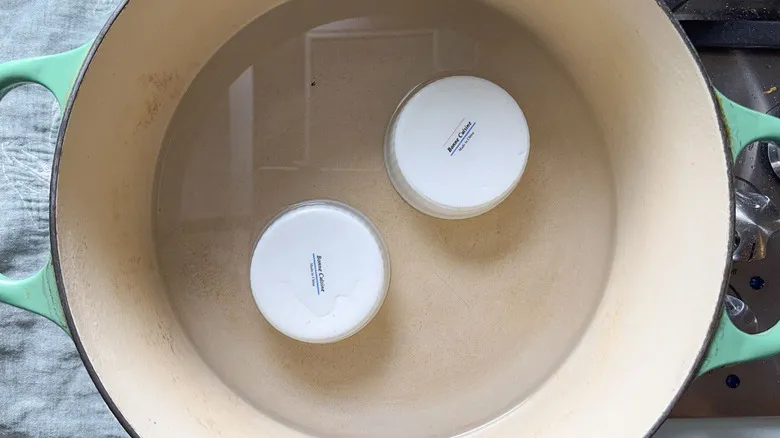
To make a steam bath, position two ramekins or other heat-resistant small bowls upside down at the bottom of a large Dutch oven or similar pot. Pour in enough hot water to reach halfway up the sides of the ramekins.
Step 11: Place the artichokes in the steam bath
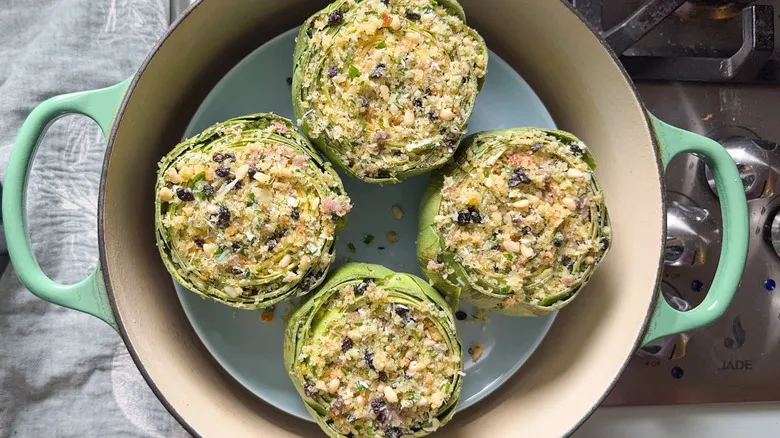
Place a plate over the ramekins and position the stuffed artichokes on the plate.
Step 12: Add rthe remaining cheese

Dust the artichokes with the leftover cheese and pour the remaining olive oil over the tops.
Step 13: Cover and steam the artichokes
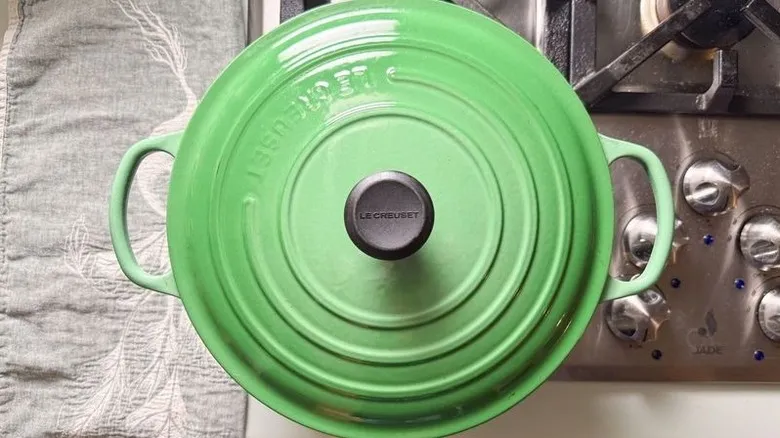
Place a lid on the pot and let it simmer on low heat for approximately 45 minutes, or until the cheese has melted and the leaves begin to separate.
Step 14: Serve the Sicilian-style stuffed artichokes
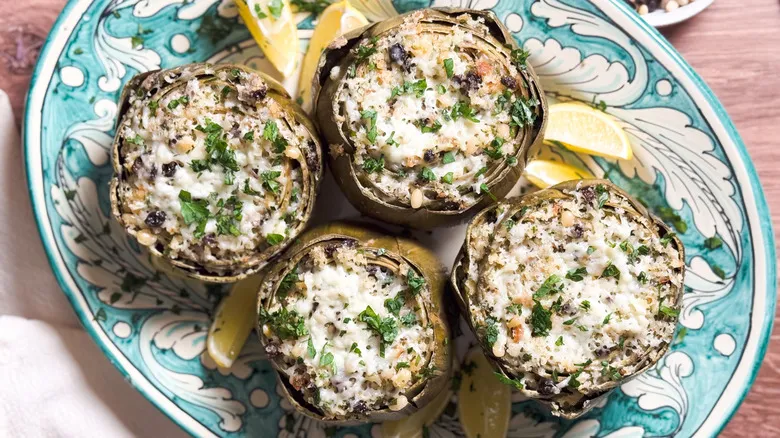
Enjoy the Sicilian-style stuffed artichokes either warm or at room temperature.
Why shouldn't you eat the fuzzy center of an artichoke?
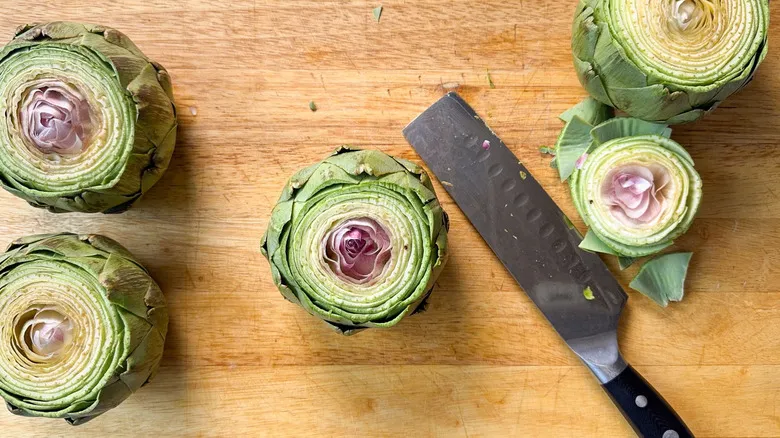
The choke of an artichoke refers to the fuzzy center found above the heart of the vegetable. While the artichoke heart and the bases of the leaves are tender and edible, the choke itself is not suitable for consumption. This fuzzy mass can be quite tough and fibrous, making it unappetizing and difficult to digest.
To separate the choke from the top of the artichoke heart, you'll need a spoon or knife, but exercise caution! A common mistake when preparing artichokes is accidentally cutting off and discarding the heart, which is the most flavorful part of the vegetable. Alternatively, you can cook the artichokes first before removing the chokes, as this task is often easier once the fibers have been simmered or steamed. However, if you're planning to stuff the artichokes, it's best to remove the chokes beforehand to create more room for a delicious filling.
What substitutions could I make to this recipe?
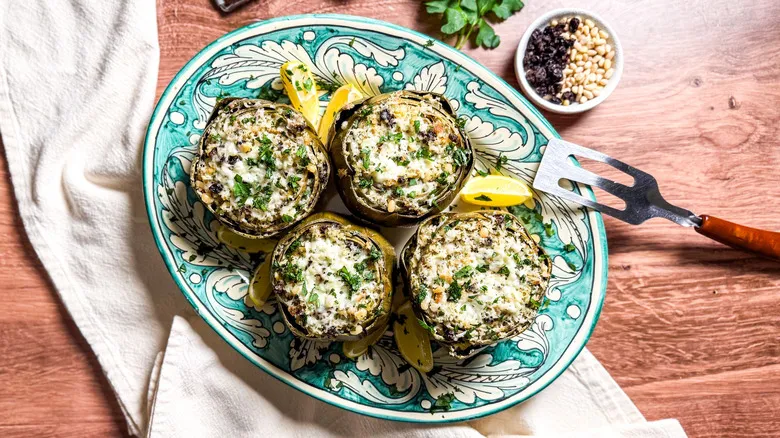
While the flavors in this recipe are traditionally Sicilian, there are numerous ways to swap in different ingredients for equally delightful results. If you’re not a fan of anchovies or need a vegetarian alternative, consider using capers or kalamata olives instead. Anchovies are small fish typically preserved in salt and allowed to ferment after harvesting, resulting in a distinctive combination of salty and umami flavors. The rich umami is what truly shines in this dish, so it’s essential to find an ingredient that provides that balance. Capers packed in brine also deliver a wonderfully intense umami and briny flavor, plus they fit perfectly within the Sicilian ingredient palette. Pitted kalamata olives offer a similar mix of umami and saltiness and can be easily mashed into a paste, just like anchovies.
Feel free to substitute basil or thyme for oregano and try different hard grating cheeses, such as Parmigiano Reggiano or Grana Padano. Instead of dried currants, you can use golden raisins, and slivered almonds make a delicious alternative to pine nuts.
Recommended

Raspberry And Cream Tiramisu Recipe
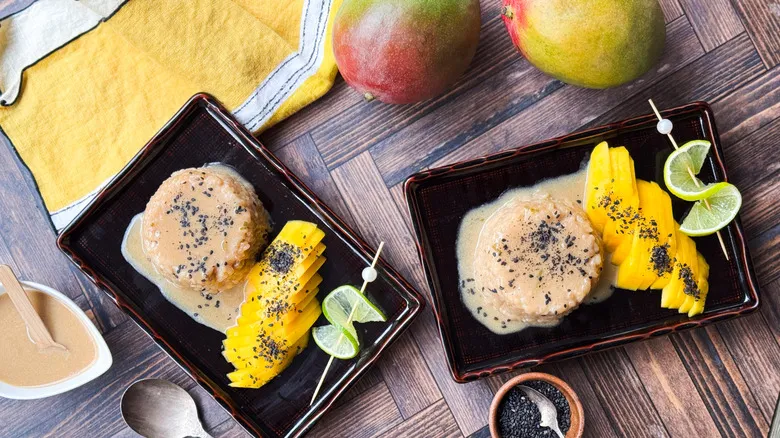
Shortcut Mango Sticky Rice Recipe

DIY Viral Sprouts Sandwich Recipe

Satay-Style Grilled Tofu Skewers Recipe
Next up

